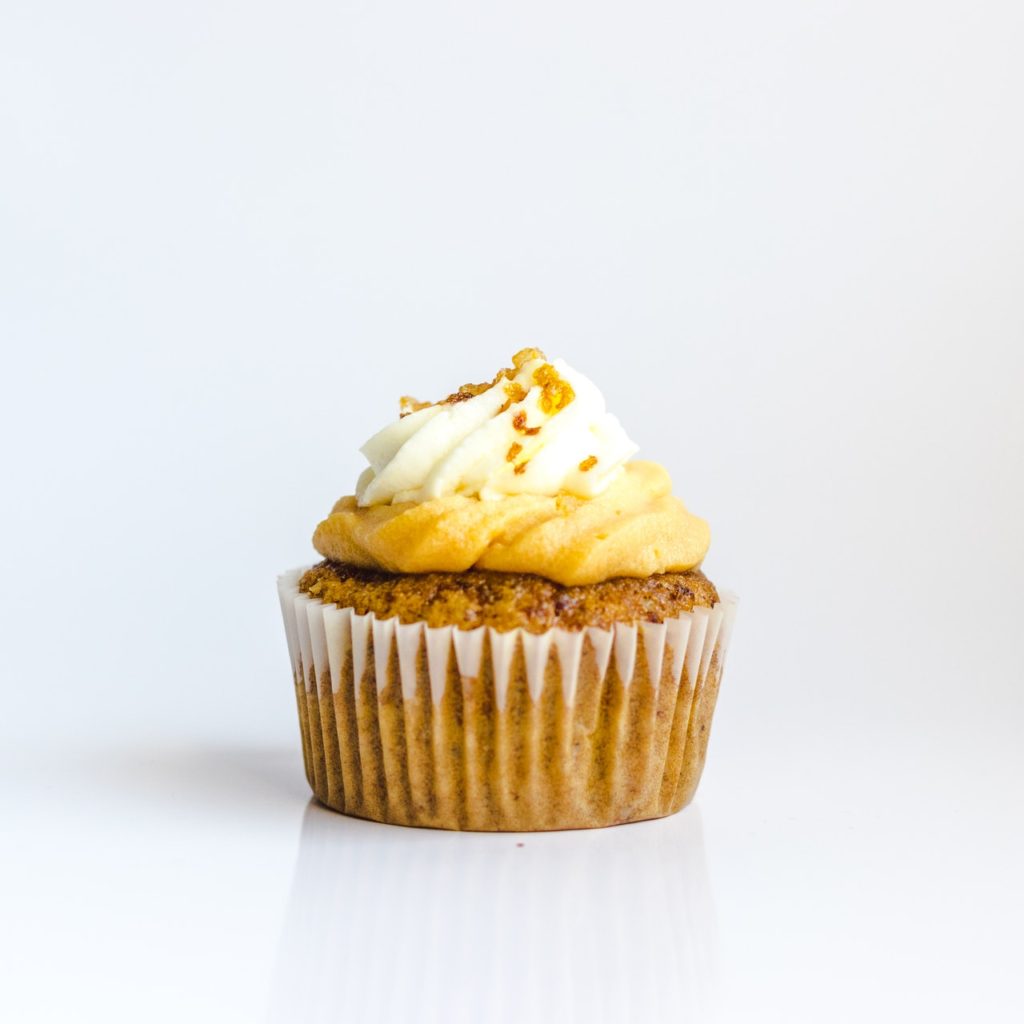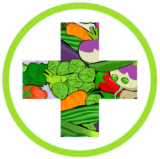Which sweetener is best for CIRS- stevia, honey, or sugar?

So many delicious recipes and tasty ripe fruits to choose from! So many sweeteners to choose from…natural, refined & unrefined, and those created in a food laboratory. Knowing which ones will likely cause the most harm while recovering from biotoxin illness can help you avoid additional complications.
Lets begin with a brief quiz about sugar. Which desserts from the list below are considered appropriate on a low amlylose/CIRS approved meal plan?
A. Oatmeal cookies
B. Fresh pineapple chunks
C. Keto peanut butter cups
D. Blueberry banana smoothie
E. All of the above
F. Neither A,B,C, or D.
Before you answer, think about what’s happening beyond your tastebuds…All sweeteners, natural, artificial, or just plain sugar trigger a release of insulin and other hormones after consuming. It’s a natural process in our body. Some have calories, some do not.
Some natural sweeteners even provide a few additional nutrients or benefits than processed white sugar:
Agave has a low Glycemic Index
Raw unpasteurized honey is rich in antioxidants, might lower blood pressure & triglycerides and lower cholesterol
Pure maple syrup supplies vitamins and minerals, is rich in antioxidants, and has fewer calories than honey
Unrefined/raw sugar contains vitamins & minerals
With all these ‘benefits’, why bother with this post?
ALL sweeteners also have side effects, all of them stimulate the desire for more sweet. And remember that all sweeteners trigger a release of insulin, even though the intensity of the spike varies between them. Stevia is a good example. If you consume a serving size of pure stevia (read the label, nothing else except stevia leaf), it won’t cause the same sugar spike and crash that a bowl of perfectly ripe pineapple will- but it is triggering additional insulin. Even though stevia is low FODMAP, it is also linked to interrupting the migrating motor complex (MMC) and shouldn’t be consumed by SIBO patients.
Glucose regulation problems and blood sugar imbalances are common with CIRS/Lyme patients- even if you have never had issues before the condition – so extra caution is needed regarding sweeteners & sugar as part of your treatment. Avoiding the spikes and drops is very important during this sensitive time. Which is reason number one to avoid sugar and sweeteners while you are healing from CIRS/Lyme and other biotoxin conditions.
A few more reasons to avoid sugar, sweeteners, and high sugar fruits…
Bacteria & fungus use sugar as food. Candida growth is one example of bacteria inside the body, and both Candidiasis & SIBO are common among CIRS patients.
Parasites also love to feed on sugar.
Sugar blocks the immune cells responsible for destroying pathogens. 100g of sugar can
block the immune system 50% for up to 5 hours.
There is no nutritional requirement for sugar
Over time, high levels of blood sugar may lead to various chronic diseases like type 2 diabetes.
Banana cupcakes anyone?
Keep reading- there are sweet tooth solutions later in this article!
From Mayo clinic:
Natural sweeteners are generally safe. But there’s no health advantage to consuming any particular type of added sugar. Consuming too much added sugar, even natural sweeteners, can lead to health problems, such as tooth decay, weight gain, poor nutrition and increased triglycerides.
From CNN:
One thing’s certain: As a range of new studies continues to show that sugar is a major factor in not only obesity but heart disease, inflammation and other chronic health conditions, many experts now advocate controlling added sugar intake in the diet as much as possible.
-teaspoon of white sugar & strawberries here-
sources of sugar
Agave
Brown rice syrup
Coconut sugar
Date sugar
Erythritol
Evaporated cane juice
Fructose
Glucose
High fructose corn syrup
Honey
Lactose
Maltose
Maltodextrin
Mannitol
Maple syrup
Molasses
Monk fruit
Sorbitol
Stevia
Synthesized: saccharin, acesulfame, aspartame, neotame, and sucralose.
Table sugar
Xylitol
Yacon syrup
Processed and pre-packaged foods almost always contain sugars or some sort of additives that will also fuel harmful bacteria growth in the body. Juice, condiments, sauces, soup, baked goods, candy, coconut water, flavored nuts and many more contain added sugar. For a comprehensive list of examples, request your free copy here.
High-sugar fruits are also discouraged. The Shoemaker website states that “the only forbidden fruit” is banana. However other high sugar fruits can cause the same blood sugar spikes like these high glycemic fruits: Avoid these and other high sugar fruits:
Pineapples
Mangoes
Bananas
Melons
Oranges
Grapes
Dates (remember dried fruits are NOT approved on MFM because of potential mycotoxins)
Lorem ipsum dolor sit amet, consectetur adipiscing elit. Ut elit tellus, luctus nec ullamcorper mattis, pulvinar dapibus leo.
The sugar craving cycle will NEVER end unless you stop putting it in your mouth.
A note about Hypoglycemia and biotoxin illness- your body needs “sugar”- but not the sugars listed here. Make sure you are consuming enough approved vegetables and moderate amounts of approved fruits to keep your blood sugar balanced. Carbohydrates found in these approved vegetables will convert to sugar in the body and provide energy.
Regarding laboratory created sweeteners like saccharin, acesulfame, aspartame, neotame, and sucralose…Although it may be tempting to use artificial sweeteners instead of sugar because they have few or no calories- be very cautious. Long term side effects are just now coming to light.They might actually be worse for you than sugar.
The takeaway: sweeteners are not recommended while recovering from CIRS/Lyme/biotoxin illness.
But realistically, many people will have a very difficult time eliminating as much as would be ideal. A general ‘sweets” guideline moving forward is to select one of these options:
Balance your sugar intake with a little of each protein, fiber, complex carbohydrates (all from the CIRS approved low alyose food list of course). The worst case scenario is eating the most refined sugars all by themselves. An example is a packaged banana cupcake made from white flour, white sugar, bananas etc. Almost no protein & fiber, and too much sugar. An example of something that is not nearly as harmful would be a serving of fresh berries dolloped by a tablespoon of pure whipped coconut cream and a sprinkle of pure stevia. And only shortly after a balanced meal (CIRS approved lean protein & vegetables)
Eat a small amount of whole fruit like oranges or mango shortly after a balanced, CIRS approved meal. Example: a slice of orange, not the whole fruit. (not a spoonful of orange marmalade- it’s not ‘whole’ and it’s loaded with sugar!)
If you absolutely can not live another moment without something sweet- just have one bite and savor it. This is not the best option as it will only feed the bacteria, spike your insulin, and strengthen the sugar craving cycle. BUT you will be a little happier for a short while!
Alas! The most delicious part of this post…
Sweet tooth solutions!
Low-sugar fruits – eat fresh, and in moderation and do not eat more than a serving size:
Berries
Apples
Pears
Peaches
Avocados
Recipes!
- No sugar applesauce
- Spiced pumpkin smoothie
- Strawberry coconut pops
Sign up for MORE free recipes and our monthly newsletter here
A quote from Sarah Wilson:
“So the simple answer is this: Quitting sugar has had the biggest impact on my AI, more so than my medication or any other medical fix (and, trust me, I’ve tried everything). In the past three years, I’ve been able to better manage my AI, but also – yes – reverse a lot of the damage.” https://www.sarahwilson.com/2014/01/can-quitting-sugar-help-heal-autoimmune-disease/
… and the correct answer to the quiz from above: F. Neither A,B,C, or D.
- Free exclusive recipes
- Helpful product giveaways
- Latest news before it reaches the blog
- Supportive tips from the moldfreemenu community
Other posts you might be interested in:
Two most important First Steps in healing from mold illness
Definitions and important phrases related to CIRS
35 safe foods for CIRS and five to avoid completely
What is a Low Amylose diet and why follow it?
According to Dr Shoemaker, the low amylose diet is a priority. Taking additional action like removing common inflammatory foods is entirely your decision to make. Some recipes may have ingredients that you don’t like or your body reacts to in some way. We recommend you avoid any food you negatively react to and substitute a different no-amylose food that does not create discomfort. Some common triggers to keep in mind are: nuts & seeds, dairy, and nightshades. Occasional consumption of some potentially inflammatory whole foods like healthy nuts & seeds, small amounts of egg, fresh vegetables & fruits that are considered nightshades might be tolerated by some people. Use caution and observe reactions to these foods carefully when challenging them after your elimination diet.
Always use fresh ingredients while healing from CIRS. NO dried, cured, canned, jarred, or pre packaged foods are recommended because of the potential for mycotoxins and unaccepted additives.
CIRS approved, moldfreemenu recipes will be low or free of amylose, and slant to AIP (Autoimmune Protocol Diet), Dairy Free/Gluten Free/Whole30/Low-carb, Paleo. The recipes will also not contain fungus, mold, or sugar. If any ingredient is unfavorable for you, omit it and potentially substitute something from the Mold Free Menu list of CIRS approved foods that is similar.
*NOTE: eggs are often not tolerated to some degree; causing an inflammatory response. Pay very close attention when reintroducing eggs on your elimination diet; most will need to eliminate eggs for the early stages of healing.
*NOTE: for those with pain, aching and myalgia, nightshades should be avoided.
*NOTE: nuts and seeds contain amylose, and might contain mycotoxins. Eat in moderation or avoid. If nuts and/or seeds are listed on moldfreemenu, they have been selected based on research that they are less likely to contain mycotoxins. ALWAYS store in a cool, dark, dry place.
*NOTE: Take considerable caution selecting fish & seafood, as many are likely to contain varying amounts of toxins & bacteria. Avoid especially in the early stages of healing or eat in moderation to minimize toxins. More info
A low amylose diet is beneficial for CIRS recovery according to Dr. Shoemaker. Elevated MMP9 levels can often be reduced by following a strict low or no amylose diet. Ask your health professional to monitor your bloodwork details.
Share this:
TwitterFacebook
Related
Beyond lemon water; flavorful CIRS approved beverages!In “AIP diet”
What foods are ok to eat when healing from CIRS? Which foods should be avoided?In “AIP”
Similarities between CIRS, mold exposure, mycotoxins, lyme disease, and autoimmuneIn “Tools & resources”
Published by
MFM Team
The MFM blog could not be as thorough as it is today without the generous input of several professionals. The team consists of certified nutritionists, MD’s, nurse practitioners, and toxic mold remediation experts to name a few. View all posts by MFM Team
Categories UncategorizedTags AIP diet, air purifier, Amylose, bacteria, bananas, biotoxin, black mold, chronic inflammation, Chronic inflammatory response syndrome, CIRS, desserts, eating to heal, environmentally acquired illness, honey, hypoglycemia, keto desserts, Low FODMAP, Mold illness, natural sweeteners, stevia, sugar, sugar free, sweetener, vegan dessert, water damage health
Post navigation
Previous Previous post: Vegan lunch bowl three ways and CIRS approved
Next Next post: Beyond lemon water; flavorful CIRS approved beverages!
Blog at WordPress.com.
Create your website at WordPress.com
Get started
